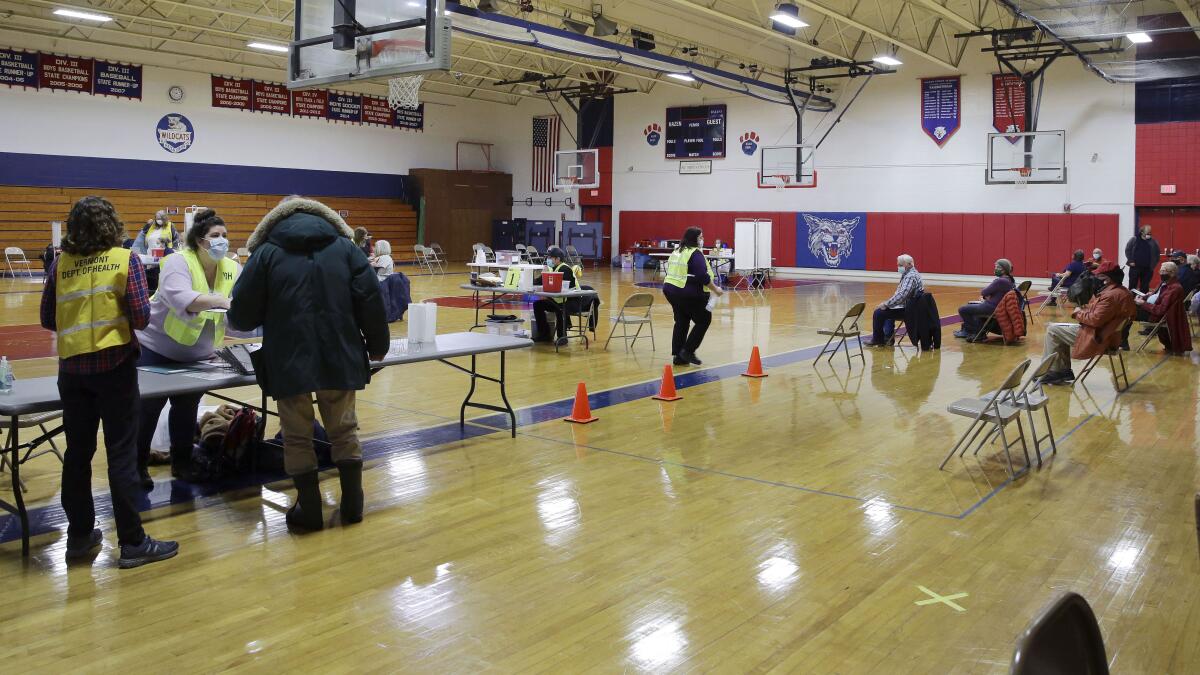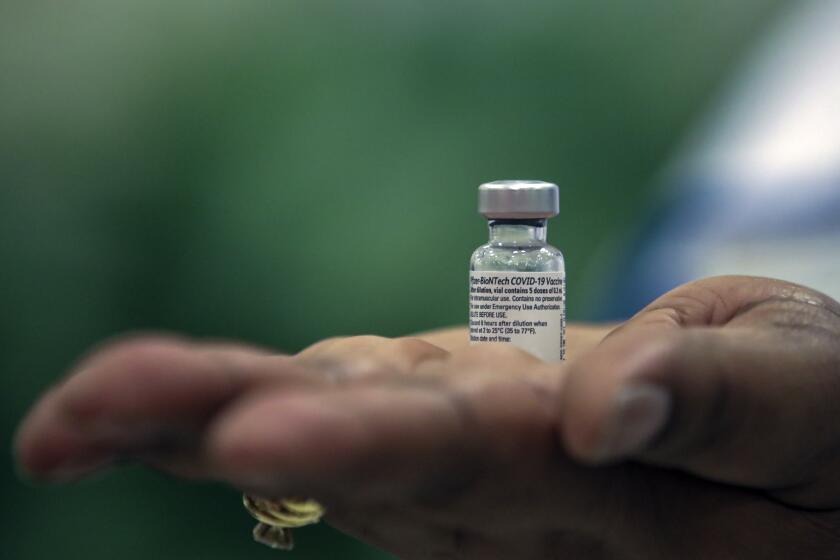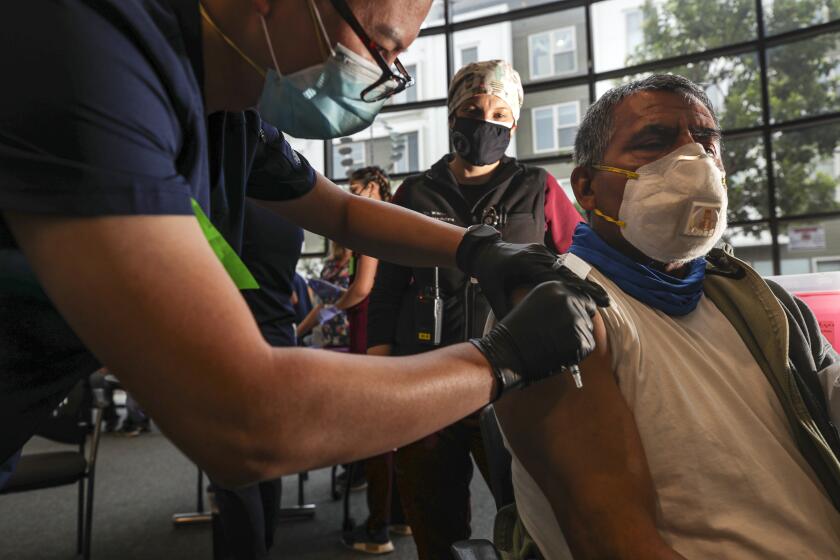Vermont joins Montana in giving COVID-19 vaccine priority to minority residents

- Share via
States have tried with limited success to get COVID-19 vaccines to people of color, who have been disproportionately killed and hospitalized by the disease.
Starting Thursday, Vermont explicitly gave Black adults and people from other minority communities priority status for vaccinations. Vermont follows Montana, which in January announced that Native Americans and other people of color would be allowed to receive the vaccine because they are at higher risk of complications from COVID-19.
For the record:
2:54 p.m. April 5, 2021An earlier version of this story said Vermont was the first state to give COVID-19 vaccine priority to people of color. It was second, following Montana.
All people of color who are permanent Vermont residents and 16 or older are now eligible for the vaccine. The state will open COVID-19 inoculations to all adults April 19.
Vermont health officials say they hope the change will lower the risk for people of color, who are nearly twice as likely as white people to end up in the hospital with COVID-19.
“It is unacceptable that this disparity remains for this population,” said Dr. Mark Levine, Vermont’s health commissioner.
But providing priority status may not be enough to get more minority residents vaccinated — and it could send the wrong message, some health experts say.
Health experts hope to nudge people of color to the front of the COVID-19 vaccine line without explicitly saying race, ethnicity influence priority.
“Giving people of color priority eligibility may assuage liberal guilt, but it doesn’t address the real barriers to vaccination,” said Dr. Céline Gounder, an infectious diseases specialist at NYU Langone Health and a former member of President Biden’s COVID-19 advisory board. “The reason for lower vaccination coverage in communities of color isn’t just because of where they are ‘in line’ for the vaccine. It’s also very much a question of access.”
Vaccination sites need to be more convenient to where these targeted populations live and work, and more education efforts are necessary so people know the shots are free and safe, she said.
“Explicitly giving people of color priority for vaccination could backfire,” Gounder said. “It could give some the impression that the vaccine is being rolled out to them first as a test. It could reinforce the fear that people of color are being used as guinea pigs for something new.”
Dr. Georges Benjamin, executive director of the American Public Health Assn., said that’s why he has opposed using race as a risk factor to determine COVID-19 vaccine eligibility.
But he sees signs that vaccine hesitancy is improving nationally and called Vermont’s new approach “admirable.” Still, he said, states should continue to use a variety of options to get vaccines to minority communities, such as providing vaccination sites in Black neighborhoods and places that residents trust, like churches.
With COVID-19 vaccines becoming more and more available, it’s hard for some people not to feel left out.
No state is achieving equity in its vaccine distribution, said Jen Kates, director of global health and HIV policy at the Kaiser Family Foundation. (Kaiser Health News is an editorially independent program of KFF.)
“People of color, whether they be Black or brown, are being vaccinated at lower rates compared to their representation among COVID cases and deaths, and often their population overall,” she said.
Black people make up about 2% of Vermont’s population and 4% of its COVID-19 infections, but they have received 1% of the state’s vaccines, according to Kaiser Family Foundation.
“Since states are really not doing well on equity, other strategies are welcome at this point,” Kates said.
Yet, there’s another reason public health officials have balked at explicitly giving people of color vaccine priority. “It could be politically sensitive,” she said.
This story was produced by Kaiser Health News (KHN), a national newsroom that provides in-depth coverage of health issues. It is one of the three major operating programs at Kaiser Family Foundation.








